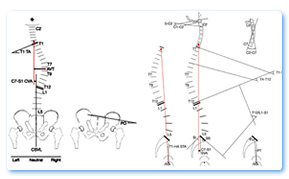February 26, 2015
Dear Dr. Kuntz,
I don’t know if I ever expressed to you enough what a significant impact you have had on my career. Sitting looking at your remembrance and picture I regret not having told you this more often.

As a young resident you had more influence on me than any other attending. Because of this influence, early on everyone just assumed I would become a spine surgeon. During those early years you demonstrated by example how to be the ideal mentor. At that time you had derived this crazy idea of shortening the spinal column to treat tethered cord syndrome. I was fortunate enough to be able to work with you and Ben Ling on the cadaveric model. I can still remember while doing those giant dissections you running in with your tie flopping around, getting in and working with us. Later, when I would see that tie, I would just remember where it had been. You did not seem to mind!
What was more important was that you not only gave me a chance to participate in the research, but you then put me in positions to be successful. You helped me get an abstract accepted at the AANS/CNS joint section spine meeting and then paid for and insisted I go to present. I can still remember it like yesterday. For some reason I did have to share a hotel room with you and I remember being awoken at 3am so that you could practice your talk. There you were at the foot of my bed, in one of your sleeveless t-‐shirts, giving your plenary talk. You always made sure you were prepared. Then later in the conference you invited Colby Maher and I to go on the Arnold Palmer golf course with you. After paying I don’t know how much, you wanted to go in after the 12th hole. Given what we paid for that round Colby and I would not let you and we finished the 18th hole in pitch black. Perhaps what I remember most, however, from that conference was when I had to give my talk. There you were, standing in the back of the room like a proud father. Then during the question and answer session when Chris Shaffrey started giving me a hard time on the podium, you were right there defending me. No one has ever felt more like a mentor to me than you that day.
There were countless other conferences and educational meetings that you insisted I attend with you. Your confidence, trust in me, and enthusiasm for spine surgery and neurosurgery was so much appreciated in those early years.
As I progressed in my residency I learned to appreciate how innovative you were—never to be stopped by an obstacle. I can remember a day when I had to come over to your house to work on a paper. As I approached the front door it was open. “Hello, Charlie”, I yelled. “In here, come on in.” You were in the kitchen trying to fix the coffee pot. The screw on the handle had fallen out. You were holding the pot above your head trying to put the screw back in, but it kept falling off the screwdriver. Funny thing was, you were doing this over the sink and each time it fell off there was such commotion as you tried to rescue the screw before it went down the drain. Then you had an “A-ha” moment when you thought about the OR and how you use bone wax on the end of screws to affix them to the screwdriver. Quickly you turned to the refrigerator and grabbed a giant block of cheese. With one jab of the screwdriver into the cheese, you then quickly and easily replaced the screw.

Throughout my residency and the years I’ve known you I have learned so much. You were the ideal mentor. You had high expectations and were demanding but to those who would work with you, you gave them so much more. You placed them in positions to succeed, you supported them fiercely, and you truly had great pride for all those whom you taught.
You also taught me to be methodical. I learned this working with you as you prepared for cases. Your work up for complex spine cases would always consist of an MRI, CT myelogram, flex/ex films, and long-‐cassette films. Even today I still take the same approach on complex spine cases. You would then stage the case to insure that everything went well. Because of your planning and approach, you were able to tackle the most difficult deformity cases. This same methodical approach applied to your research. I remember you told me once that if you are to publish something make sure it is something that will be useful to many for many years to come. Your studies on normal spinal curvature variance exemplify this approach and will always be landmark studies for spine surgeons.
I also learned of your strong faith in God, commitment to your community and compassion, especially for your two children and staff. You truly just loved being around people.
I could go on and on with stories that I have being with you over the years. When I think back on any of these the one theme that seems to resonate with them all is the joy you had for life. You approached everything with a smile and always made it a point to enjoy what you were doing. For those of us who worked closely with you, your love for life was contagious.
Charlie, I am grateful for all that you have done for me and I will miss you dearly.
Your friend and mentee,
Andy Grande
Comments are closed.